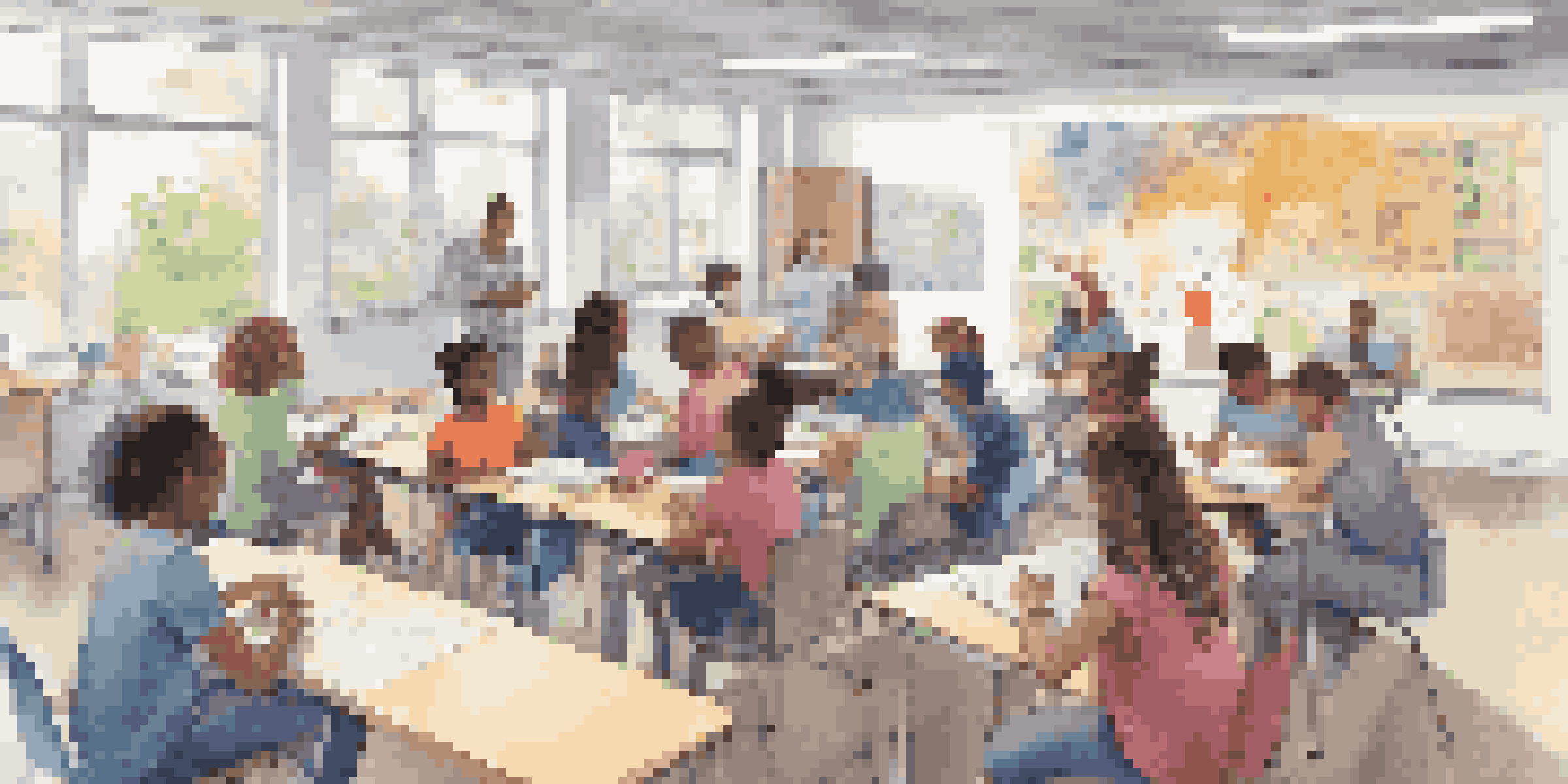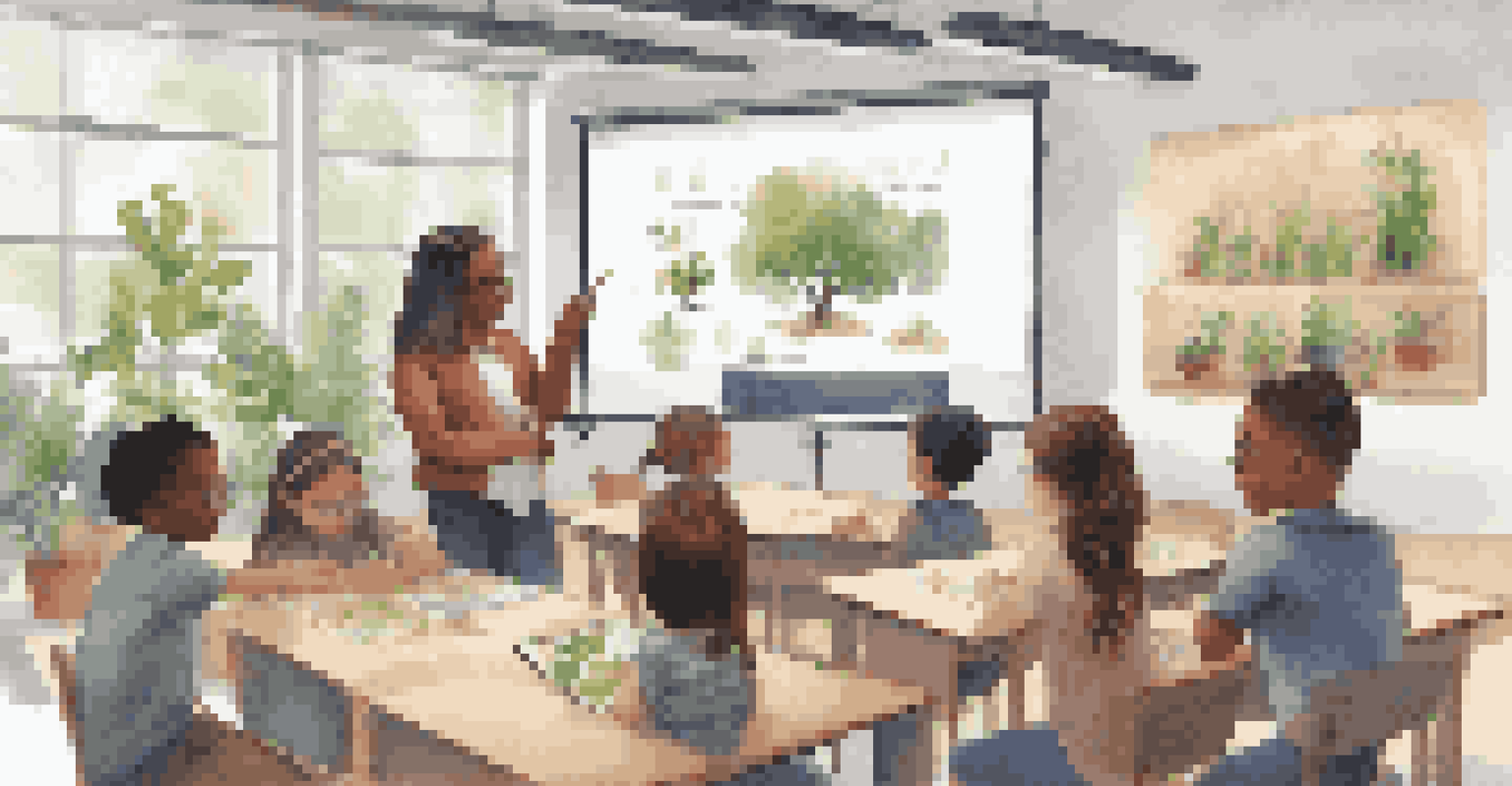Flipped Classroom: Creating Inclusive Learning Environments

Understanding the Flipped Classroom Model
The flipped classroom model turns traditional teaching on its head. Instead of lecturing during class time, educators assign instructional content for homework, allowing students to engage with it at their own pace. This approach empowers students to take charge of their learning, making it a more personalized experience.
The best way to predict the future is to create it.
By shifting lectures to homework, precious class time can be dedicated to interactive activities. This not only encourages collaboration among students but also allows teachers to provide targeted support. It’s like turning a lecture hall into a workshop where everyone can contribute and learn from one another.
As a result, students can revisit concepts they find challenging, fostering a deeper understanding. This model is particularly beneficial for diverse learners, as it accommodates varying learning speeds and styles. In essence, the flipped classroom creates a dynamic learning environment that prioritizes student engagement.
Promoting Inclusivity Through Flexible Learning
Inclusivity is about recognizing and valuing the diverse backgrounds and abilities of all students. The flipped classroom model supports this by allowing learners to access materials in various formats, such as videos, podcasts, or reading assignments. This variety caters to different preferences and needs, making learning more accessible.

For instance, a student who struggles with reading might benefit from watching a video explanation instead. Meanwhile, another student may prefer engaging with a text-based lesson. By providing this flexibility, educators can ensure that every student finds a way to connect with the material.
Flipped Classroom Enhances Engagement
By shifting lectures to homework, students can engage in interactive activities during class, fostering collaboration and deeper understanding.
Moreover, the flipped classroom encourages peer-to-peer learning. Students can collaborate during class, sharing their insights and helping each other grasp difficult concepts. This social aspect not only strengthens understanding but also builds a sense of community and belonging among learners.
Encouraging Student Agency and Responsibility
One of the most significant advantages of the flipped classroom is the promotion of student agency. When learners take the initiative to engage with content outside of class, they develop a sense of ownership over their education. This empowerment can lead to increased motivation and a more profound commitment to their learning journey.
Education is not the filling of a pail, but the lighting of a fire.
In a traditional classroom, students often passively receive information, but the flipped model shifts this dynamic. Learners are encouraged to set their own goals, manage their time, and reflect on their understanding. This process not only fosters independence but also cultivates critical thinking skills.
Additionally, when students feel responsible for their learning, they are more likely to seek help when needed. This proactive approach to education creates an environment where asking questions and seeking clarification becomes the norm, further enhancing inclusivity and support.
Utilizing Technology for Enhanced Learning Experiences
Technology plays a pivotal role in the flipped classroom, providing various tools that enhance the learning experience. From online platforms that host educational videos to collaborative tools that facilitate group projects, technology can make learning more engaging and interactive. This is particularly beneficial for students with different learning styles.
For example, platforms like Google Classroom or Edmodo allow teachers to share resources and engage with students outside of traditional classroom settings. Students can access materials anytime, anywhere, ensuring that they can learn at their own pace. This flexibility is invaluable, especially for those juggling other commitments.
Inclusivity Through Flexible Learning
The model accommodates diverse learning styles by providing materials in various formats, ensuring all students can connect with the content.
Moreover, technology can help track student progress, allowing educators to identify areas where additional support may be needed. By leveraging these digital tools, teachers can create a more inclusive environment that meets the diverse needs of all learners.
Creating a Supportive Classroom Culture
A supportive classroom culture is essential for the success of the flipped classroom model. Establishing an environment where students feel safe to express their thoughts, ask questions, and make mistakes is crucial. This nurtures a sense of belonging, encouraging student participation and collaboration.
Teachers can foster this culture by setting clear expectations and promoting respectful communication. Regular check-ins and feedback sessions can also help students feel valued and heard. When learners know their voices matter, they are more likely to engage actively in their education.
Moreover, celebrating diversity within the classroom can enhance this supportive atmosphere. By acknowledging and valuing each student's unique background, teachers can cultivate an inclusive community that thrives on collaboration and mutual respect.
Assessing Learning Outcomes in a Flipped Classroom
Assessment in a flipped classroom extends beyond traditional testing methods. It emphasizes formative assessments that provide ongoing feedback rather than solely relying on summative evaluations. This approach allows educators to gauge student understanding throughout the learning process, making adjustments as necessary.
For instance, using quizzes, peer assessments, and reflective journals can help identify areas where students may be struggling. By incorporating diverse assessment methods, teachers can accommodate different learning styles and provide tailored support.
Technology Boosts Learning Flexibility
Utilizing digital tools allows students to learn at their own pace, enhancing accessibility and tracking progress effectively.
Additionally, involving students in the assessment process can enhance their understanding of their progress. Encouraging self-assessment and peer feedback fosters a growth mindset, where students learn to view challenges as opportunities for improvement.
Challenges and Solutions in Implementing Flipped Classrooms
While the flipped classroom model offers numerous benefits, it also presents certain challenges. Not all students may have access to technology or a conducive learning environment at home. This digital divide can hinder the effectiveness of the model and create disparities among students.
To address this issue, educators can provide alternative resources, such as printed materials or after-school access to technology. Additionally, creating a structured environment during class time can help students who may struggle with self-directed learning.

Another challenge is ensuring that students come prepared for class discussions. Teachers can mitigate this by setting clear expectations and providing incentives for engaging with materials beforehand. Open communication about the importance of preparation can help foster a culture of responsibility among students.